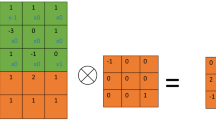Abstract
In order to reduce their exposure to the erratic fluctuations of the financial markets, traders are nowadays increasingly dealing with options and other derivative securities instead of directly trading in the underlying assets. This paradigm shift has attracted the attention of many researchers, and there has been a tremendous increase in the awareness and activities of derivative securities. In particular there is a need to devise new techniques to address the limitations of traditional parametric pricing methods, which rely on assumptions and approximations to capture the complex dynamics of pricing processes. This paper proposes a novel non-parametric method using an ad-hoc recurrent neural network for estimating the future prices of war commodities such as gold and crude oil as well as currencies, which are increasingly gaining importance in the financial markets. The price predictions from the network, shown to be accurate and computationally efficient, are used in a hedging system to avoid unnecessary risks. Experiments with actual gold and currency trading data show that our system using the proposed network and strategy can construct portfolios yielding a return on investment of about 4.76%.
Similar content being viewed by others
References
Sutton W (1988) Trading in currency options. New York Institute of Finance, New York
Hutchinson J, Lo A, Poggio T (1994) A nonparametric approach to pricing and hedging derivative securities via learning networks. J Financ 49:851–889
White H (1988) Economic prediction using neural networks: the case of IBM daily stock returns. In: Proceedings of the 2nd Annual IEEE conference on neural networks, vol 2, pp 451–458
Chiang W, Urban TL, Baldridge GW (1996) A neural network approach to mutual fund net asset value forecasting. Omega Int J Manag Sci 24(2):205–215
Kosaka M et al. (1991) Application of fuzzy logic/neural network to securities trading decision support system. In: Proceedings of the IEEE conference on systems, man, and cybernetics, vol 3, pp 1913–1918
McCann P, Kalman BL (1994) A neural network model for the gold market. J Forecast 16:165–176
Parisi et al. (2004) Rolling and recursive neural network models: the gold price. Presentation at the Universidad de Chile
Jang J-SR (1996) Input selection for ANFIS learning. In: Proceedings of the IEEE international conference on fuzzy systems
Setiono R, Liu H (1997) Neural-network feature selector. IEEE Trans Neural Netw 8(3):654–659
Setiono R et al. (2002) Extraction of rules from artificial neural networks for nonlinear regression. IEEE Trans Neural Netw 13(3):564–577
Quah KH, Quek C (2006) MCES: A novel Monte Carlo evaluative selection approach for objective feature selections. IEEE Trans Neural Netw 18(2):431–448
Elman JL (1990) Finding structure in time. Cogn Sci 14:179–211
Hopfield JJ (1982) Neural networks and physical systems with emergent collective computational properties. In: Proceedings of the national academy of sciences of the USA, vol 79, pp 2554–2588
Werbos PJ (1990) Backpropagation through time: what it does and how to do it. Proc IEEE 78(10):1550–1560
Williams R, Zipser D (1989) Experimental analysis of the real-time recurrent learning algorithm. Connect Sci 1(1):87–111
Sutton RS, Barto AG (1998) Reinforcement learning: an introduction. MIT, Cambridge
Hebb DO (1949) The organization of behavior. Wiley, New York
Black F, Scholes M (1973) The pricing of options and corporate liabilities. J Political Econ 81:637–654
Radzikowski P (2000) “Non-parametric methods of option pricing.” In: Information and knowledge management in the 21st century, INFORMS & KORMS Seoul 2000 conference, pp 474–480
Yao JY, Tan CL (2000) Option price forecasting using neural networks. Omega Int J Manag Sci 28:455–466
Qi M, Maddala GS (1995) Option-pricing using artificial neural networks: the case of S&P500 index call options. In: Neural networks in financial engineering, London, pp 78–92
Hanke M (1997) Neural network approximation of option-pricing formulas for analytically intractable option pricing models. J Comput Intell Financ 5(5):20–27
Galindo I (2000) A framework for comparative analysis of statistical and machine learning methods: an application to the black-scholes option-pricing equation. In: Proceedings of 6th international conference on computational finance
Chen SH, Lee WC (1997) Option pricing with genetic algorithms: a second report. In: Proceedings of the 1997 IEEE international conference on neural networks, vol 1, pp 21–25
Calamos NP (2005) Convertible arbitrage: insights and techniques for successful hedging. Wiley, Hoboken
Tsiveriotis K, Fernandes C (1998) Valuing convertible bonds with credit risk. J Fixed Income 8:95–102
CME Web: Chicago Mercantile Exchange, US http://www.cme.com
Ang KK, Quek C (2005) RSPOP: rough set-based pseudo outer-product fuzzy rule identification algorithm. Neural Comput 17(1):205–243
Author information
Authors and Affiliations
Corresponding author
Rights and permissions
About this article
Cite this article
Quek, C., Pasquier, M. & Kumar, N. A novel recurrent neural network-based prediction system for option trading and hedging. Appl Intell 29, 138–151 (2008). https://doi.org/10.1007/s10489-007-0052-4
Published:
Issue Date:
DOI: https://doi.org/10.1007/s10489-007-0052-4




